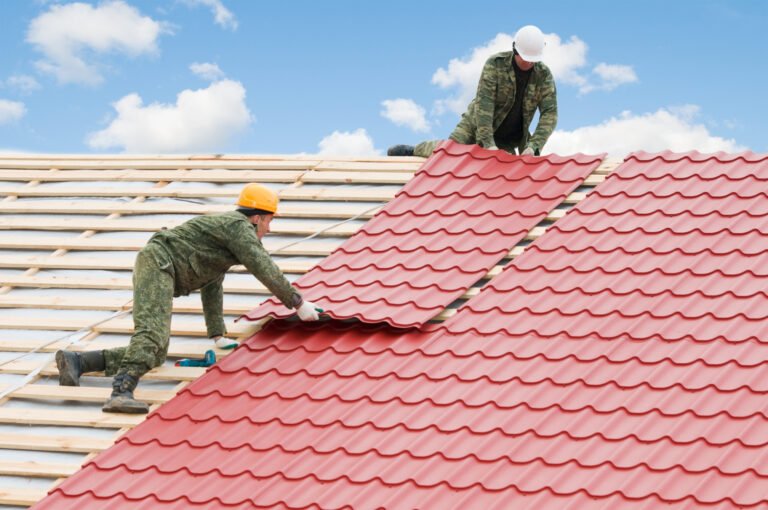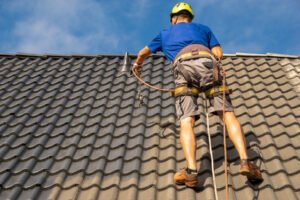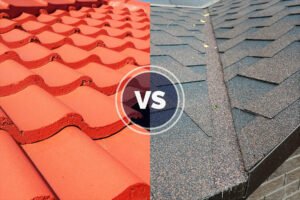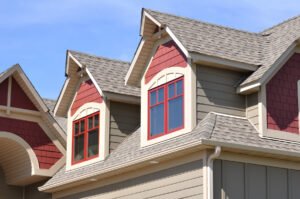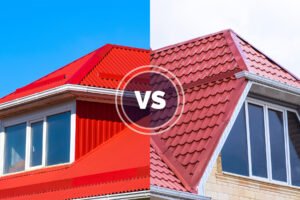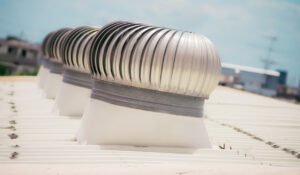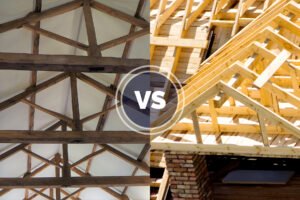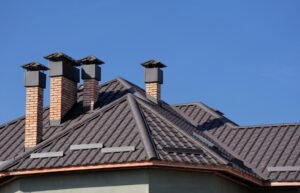Metal roofs are efficient, but their underlayers and fixing make them a tough choice! So, many homeowners try to cut costs by installing them on their existing shingle roofs. But is it a good idea, or does it come with its own problems? Let’s find out!
Key Takeaways
- You can mount metal roofs over shingles, but it may not give the best results because of its vulnerability to moisture and fungus.
- Metal roofs over shingles provide good insulation in snowy areas. But, it might increase the vapor underneath.
- Most city building codes and HOAs restrict the use of such multi-layered roofs. So, you’ll need additional charges for the permit or might face a penalty.
- Metal roofs over shingles overburden the rafters and might buckle them. So, you must reinforce them with proper bracing and struts.
What Can Go Wrong with Metal Roofs Over Shingles?
Metal roofs are easy to install over shingles, but they might hide flaws or leaks. Moreover, they might generate more problems and increase repair costs.
So, let’s discuss some common issues and tips to tackle them.
1. Unnoticed Damage or Fungus
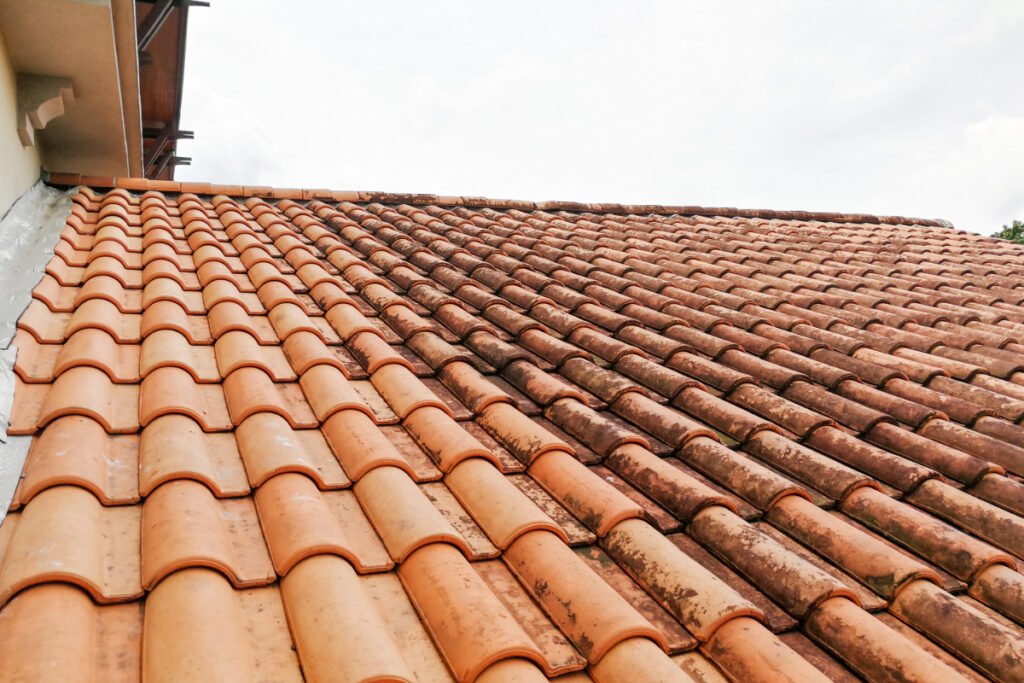
Metal roofs might mask all the chips on your existing shingles and damage them even more. They also reduce the airflow to your shingles, causing more fungus on their edges. Moreover, they might damage the rafters and lower the roof strength.
Similarly, rainwater might enter the roof gaps and leak along the broken or chipped shingles. And this might rot your shingles and rust the metal roofs too! So, you’ll need more money to reglaze them and reduce discoloration and water damage.
Lastly, metal roofs might overburden the loosened shingles and crush them. So, the broken shingles might fall even inside the attic.
Solutions:
- Tighten the roofing shingles with a stapler before installing the metal roof on top.
- Use an air compressor and remove all the excess moisture from the gaps.
- Repair and replace all the broken or chipped shingles beforehand.
Seal all the roof gaps with rubber or silicone sealants or install a roof flashing to reduce rust.
2. Trapped Moisture & Vapor
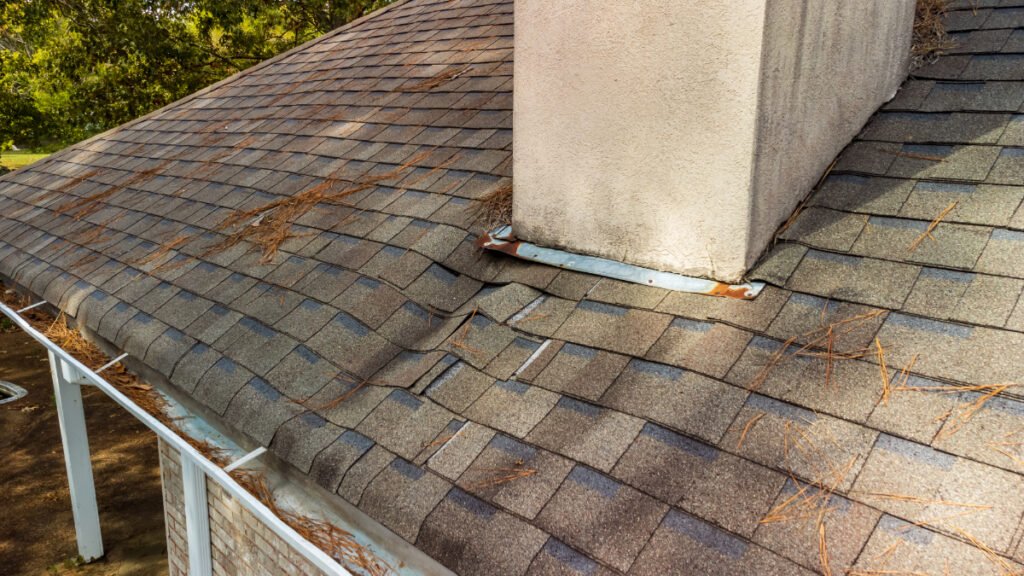
Metal panels might trap extra moisture under them and warp the shingles gradually. So, you might struggle with a lot of dents and uneven rooflines. It might also lead to a bumpy roof and water pooling in the monsoon.
Moreover, the trapped vapor might corrode the shingles and rust the metal roofs. So, they’ll leak more and rot along the trusses and the roofline.
Trapped moisture also affects the roof vent’s exhaust and absorbs water. So, a metal roof over shingles might moisten your attic and reduce cross ventilation.
Solutions:
- Install a ridge vent and mount some soffit intake vents at the apex to increase airflow.
- Trace the origin of the leak and seal it with caulk or roofing cement.
- Mount a vapor barrier to reduce the trapped moisture and heat.
Use good spray foam or batt insulation to absorb all the excess moisture and keep the roof dry. Or, add an air conditioning unit or dehumidifier to reduce the humidity inside.
3. Complex Repairs or Replacements
Metal roofs over shingles make it challenging to reach and repair roof components. That means you must remove the metal panels and shingles to repair your rafters and trusses. So, be ready for double repair and labor charges with them!
You’ll also find replacing the underlayer or waterproofing difficult if you have a metal roof on top. So, this might widen the roof gaps and increase the leaks in the attic.
In short, a metal roof over shingles extensively increases repair and maintenance costs.
Solutions:
- Change your underlayer before installing the roof and paint it for more durability.
- Lubricate the trusses and joints to minimize repair and replacements.
- Use a vapor barrier on top to reduce water pooling and seepage.
Use a felt or self-adhering sheet to protect the rafters from heavy damage and repairs.
4. Extra Roof Weight
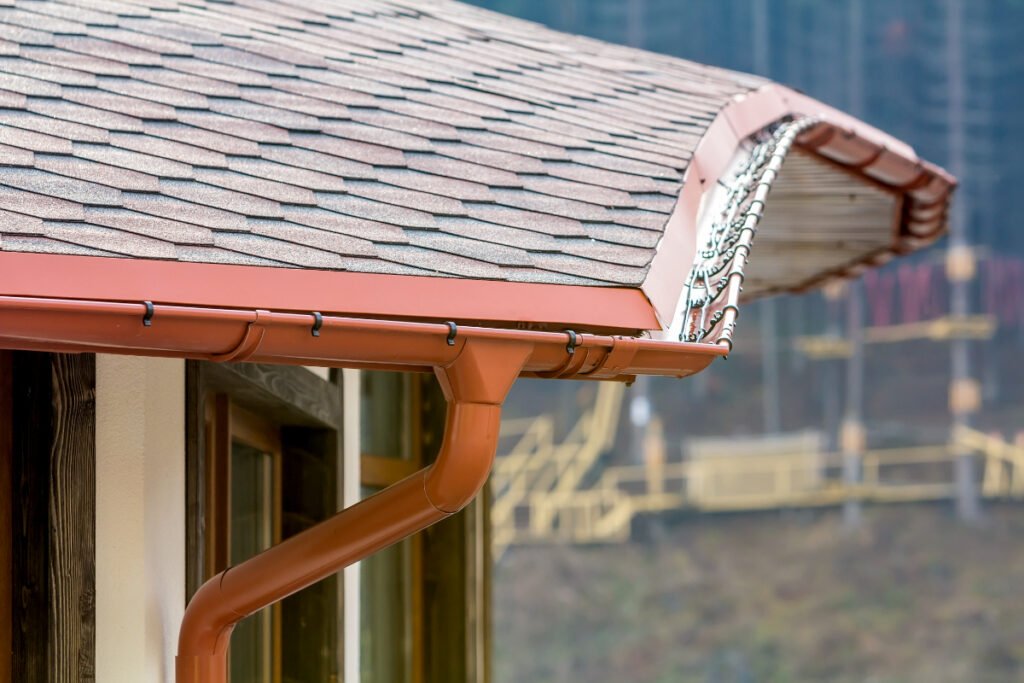
Did you know that your ceiling joists can carry only 5 – 6 lbs per square foot? So, you shouldn’t add a metal roof over the shingles if you aren’t using a reinforced truss or rafter.
Metal roofs over shingles weigh about 4 – 5 pounds per square foot. So, they might burden the rafters and buckle them. And it might even lead to severe structural damage and collapse if not repaired in time.
Similarly, metal roofs over shingles might squeeze your roof decking and break it. So, it might allow more water to drip inside and cause fungus.
Solutions:
- Use lightweight aluminum panels and wood shake shingles to reduce weight.
- Mount a fully-braced roof truss or rafter for better support.
- Add a bitumen underlayer to redistribute the weight evenly and reduce overburdening.
Apply a silicone adhesive along the rafters, and use steel fasteners for more load.
5. No Scope for Roof Decking Replacement
Metal roofs over shingles make it difficult to repair the roof decking and inspect it for leaks or dents. So, you might not realize any structural issues until the decking collapses.
And since the decking hides under the metal panels and shingles, you won’t be able to reglaze or redeck it during a roof inspection. So, the decking might rot with time and damage your rafters and insulation.
Solutions:
- Use a vacuum and blow dry the ridge and the apex for better moisture control.
- Remove all the dead leaves and debris that might seep inside and damage the deck.
- Lubricate the deck with an enamel wood stain before installing the roof.
Use an oriented strand board or plywood decking for better moisture resistance under metal roofs and shingles.
6. Violates the City Building Codes
Metal roofs over shingles aren’t allowed in many American states like Arizona and California. So, you might risk complete demolition of your roof or land up in a hefty fine of $5000.
Solutions:
- Get permission from the HOA and mention all the materials and fasteners to avert a fine.
- Select a residential roofing sheet, or go for Class-A rated Galvalume sheets to get a permit quickly.
7. Failing Fasteners or Clips
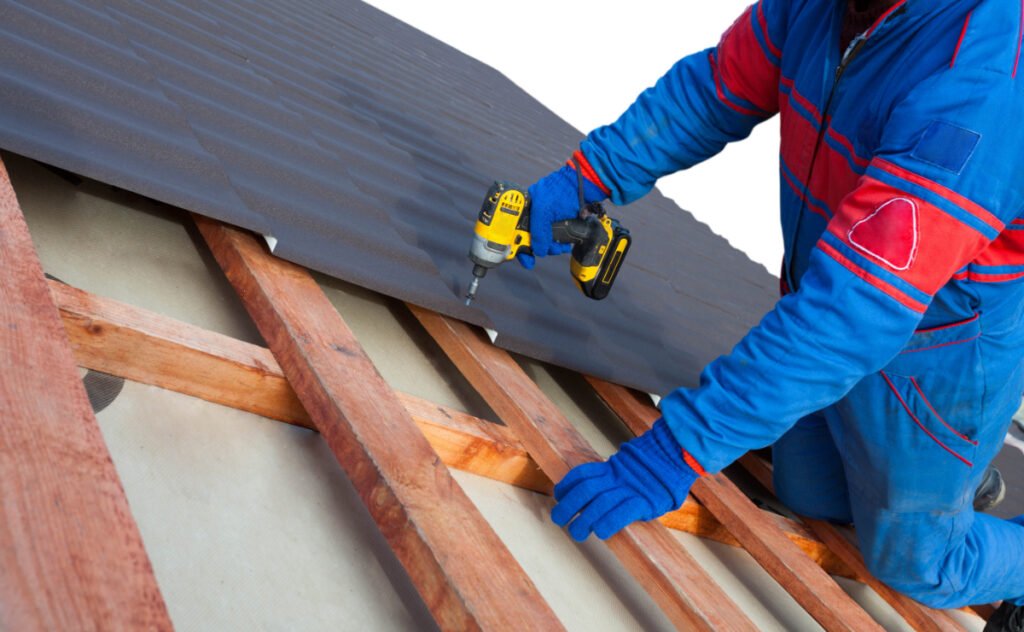
Metal fasteners or clips do not get a proper grip on shingle roofs and might slide or loosen up with the excess weight. Or, they might widen the roof gaps and allow more water to enter the house. Plus, they might tilt the metal panels and disrupt your roof line.
Solutions:
- Use wider fasteners and screw them directly to the rafters for better strength and support.
- Oil the fasteners with grease or WD-40 lubes to reduce friction and bending.
Benefits of Metal Roofs over Shingles
Metal roofs over shingles aren’t always bad. And, if you have a properly reinforced truss, you can add a double metal and shingle roof to enjoy the following benefits:
- Better insulation and temperature control in snowy areas.
- Saves the labor and charges to remove, dump and recycle the shingles.
- It doesn’t need an additional underlayer or felt.
- Speedy installation and fixing.
Is a Metal Roof over Shingles a Good or Bad Idea?
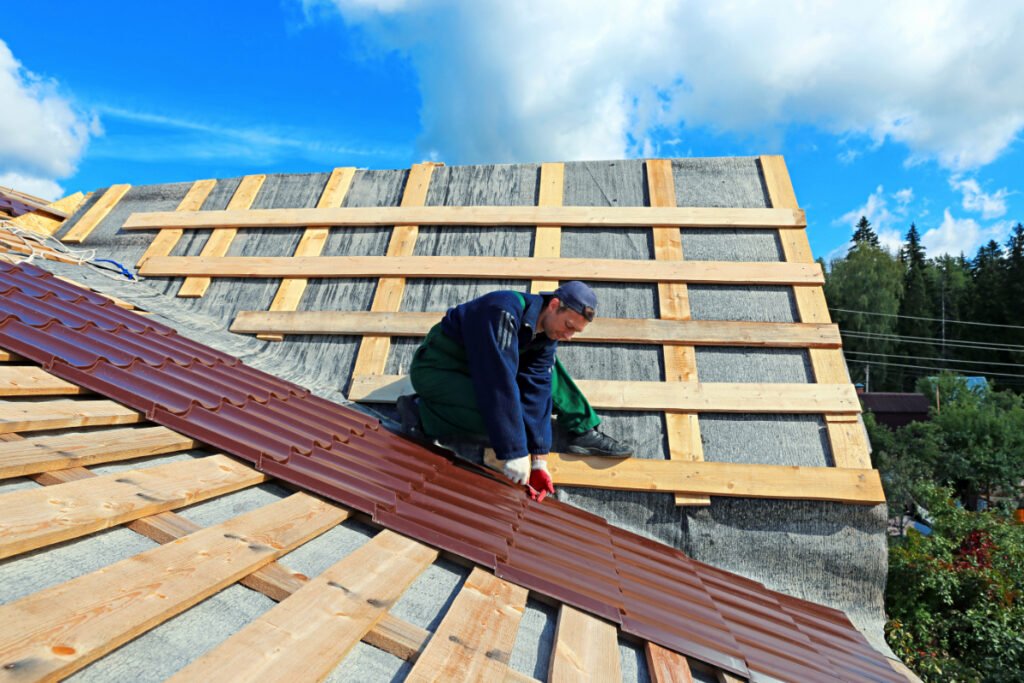
Metal roofs over shingles is usually a bad idea, but you can go with it if your HOA allows it. Or, you can use this double roof for better snow protection and heat retention. But, you mustn’t use it in humid or high-leakage areas.
Let’s look at some situations where you can and cannot install a metal roof over shingles:
When Can You Install a Metal Roof Over Shingles?
- If your local building codes and HOAs give you a written permission.
- If you use a felt roof underlay and a ridge vent.
- If you want to save money in the short-term.
- If you have an unlimited warranty or Class-A rated metal panels.
When Should You Avoid Installing a Metal Roof Over Shingles?
- If you have unreinforced rafters or trusses.
- If there are visible signs of structural damage and buckling.
- If you live in a humid or tropical climate.
- If your building codes don’t allow it.
- If you have a heavy, wooden roof deck and shingles.
How to Inspect a Shingle Roof Before Adding a Metal Roof on Top
- Inspect the roof trusses and check for overburdening or sagging before installing the metal roofs.
- Examine all the warped or deformed areas and repair them beforehand.
- Seal off all the shingle gaps and caulk the edges to reduce leaks.
- Check the surface for fungus and remove it with bleach or vinegar.
- Inspect if your roof decking is OSB or plywood for better strength and load capacity.
Tips for Maintaining a Metal Roof over Shingles
- Install roof crickets around a chimney and add a backing to reduce water pooling.
- Clean the gutters and downspouts for better drainage and moisture control.
- Ensure proper exhaust from the ridge vents and seal its edges to keep the roofs dry.
- Add a vapor barrier to reduce water infiltration in the gaps and save the roof from decay.
Is It Better to Remove Shingles Before Installing the Metal Roof?
Yes, it’s better to remove the shingles to prevent trapped water and vapor under the metal roofs. Similarly, metal roof fasteners might not adhere well to the shingles and slide with wind or rain.
Do You Need an Underlay for a Metal Roof over Shingles?
You do not need an underlay for a metal roof over shingles, but you can use a thin bitumen sheet or felt for better moisture control.
Can You Put Metal Roofs Over Shingles Without Furring Strips?
No, you shouldn’t put a metal roof over shingles without furring strips or extra plyboards, as these might widen the gaps and leak. In contrast, furring strips will ensure proper ventilation under the roofs and keep them dry.
How Many Layers of Shingles Can Be Under a Metal Roof?
There can be about 2-3 layers of lighter aluminum or steel shingles and 1-2 layers of wood or resin shingles under a metal roof. But, you mustn’t use slate or concrete shingles as these might overburden the rafters.
Metal roofs over shingles are bad for most homes due to their leakage, fungus, and weight problems. Still, you can use them for added insulation in chilly areas. But, you must reinforce the rafters to bear extra weight and receive a written permit from the HOA.
So, we suggest you go with a single shingle or metal roof and add proper insulation for weather control. But is a metal roof better than a shingle roof? Jump to our guide on Metal roofs vs Shingle roofs for more!

